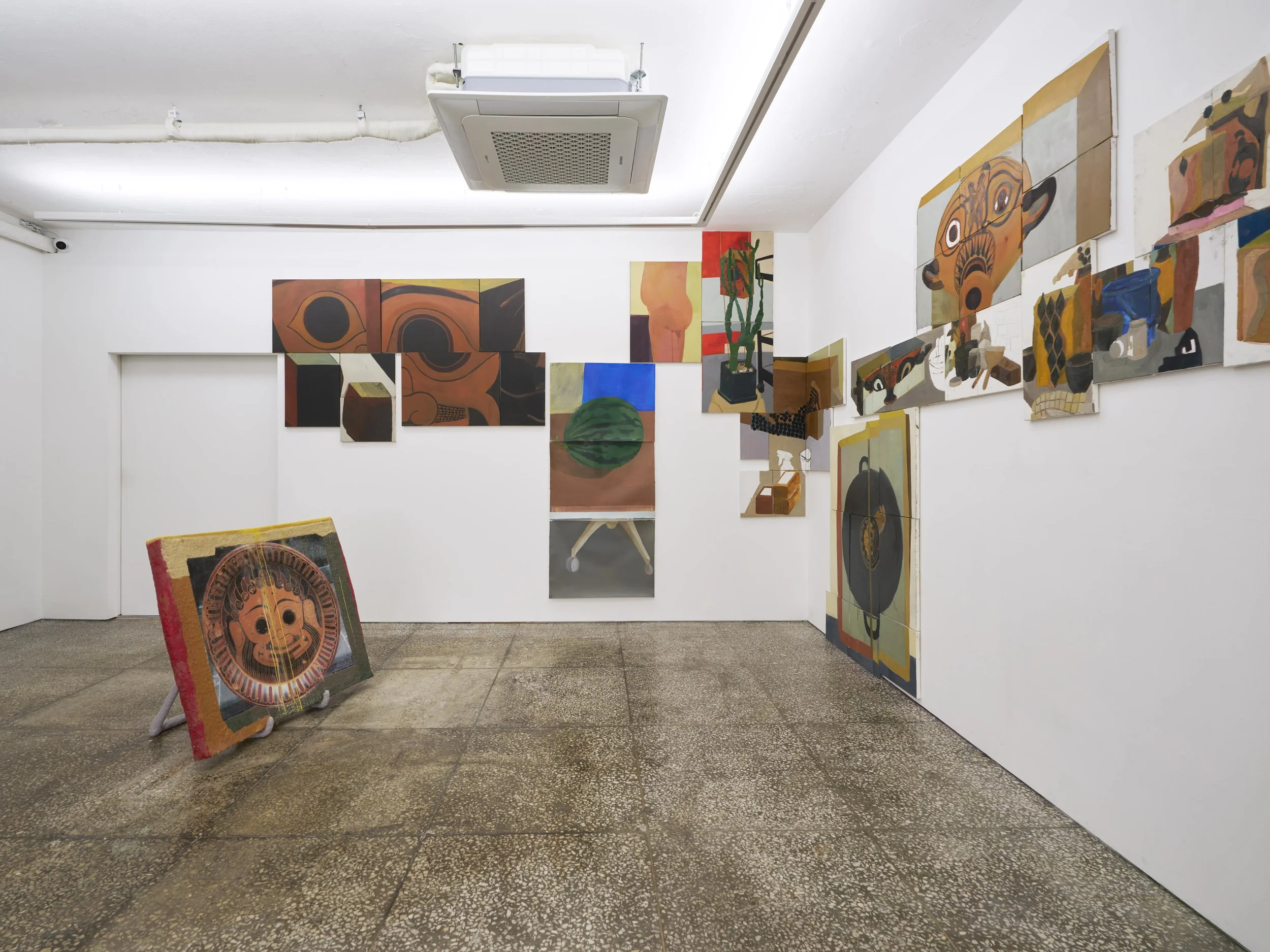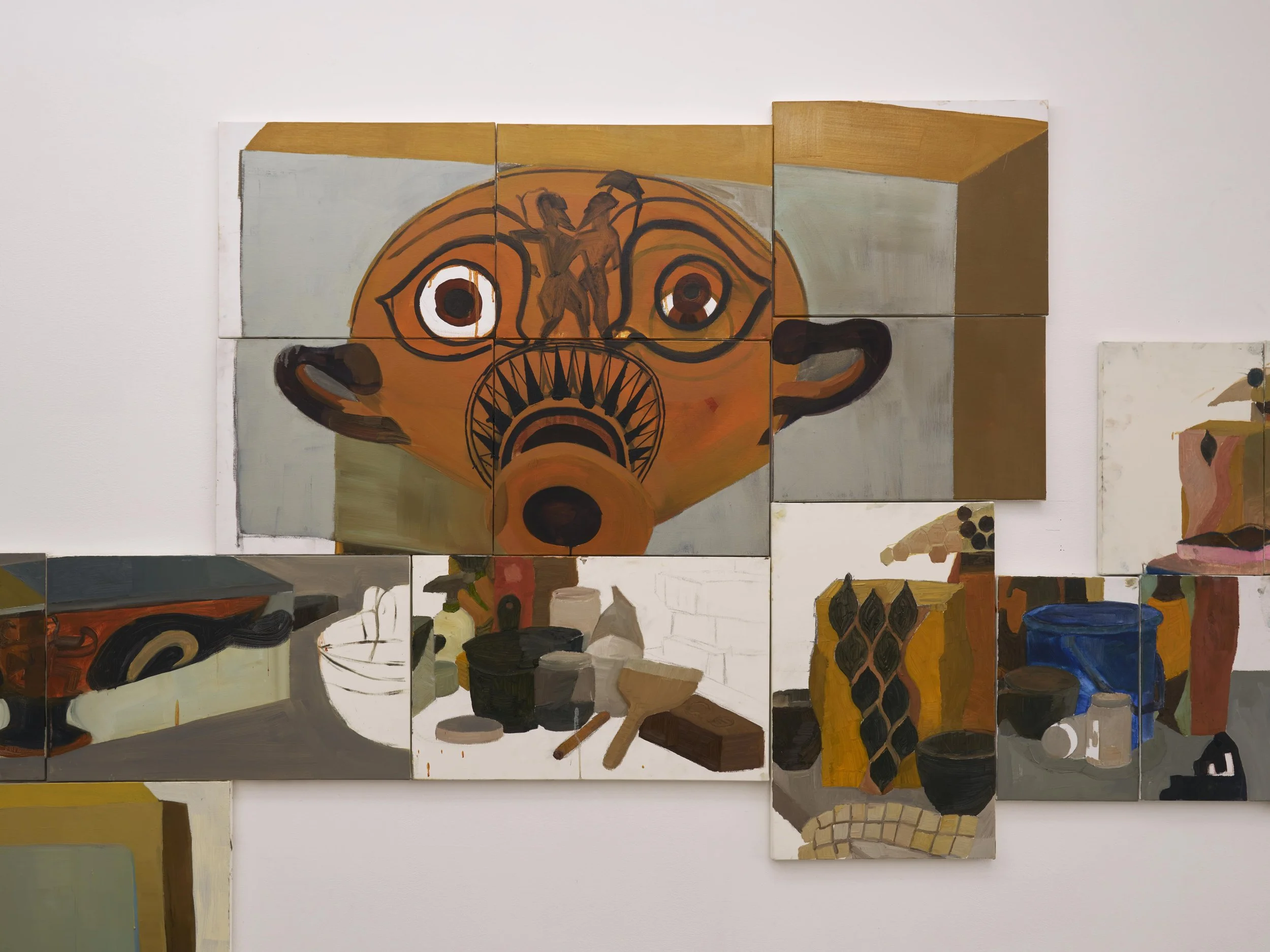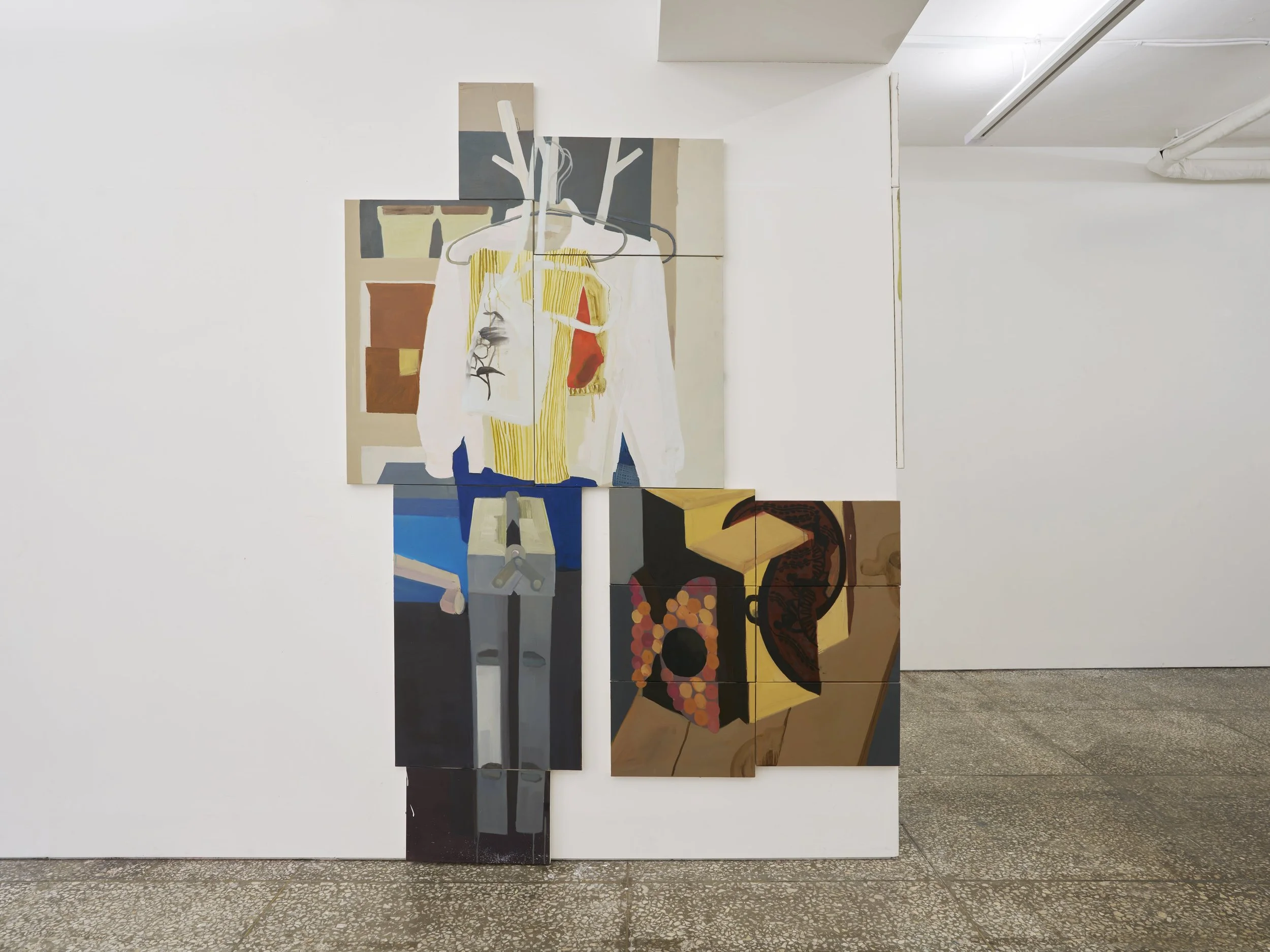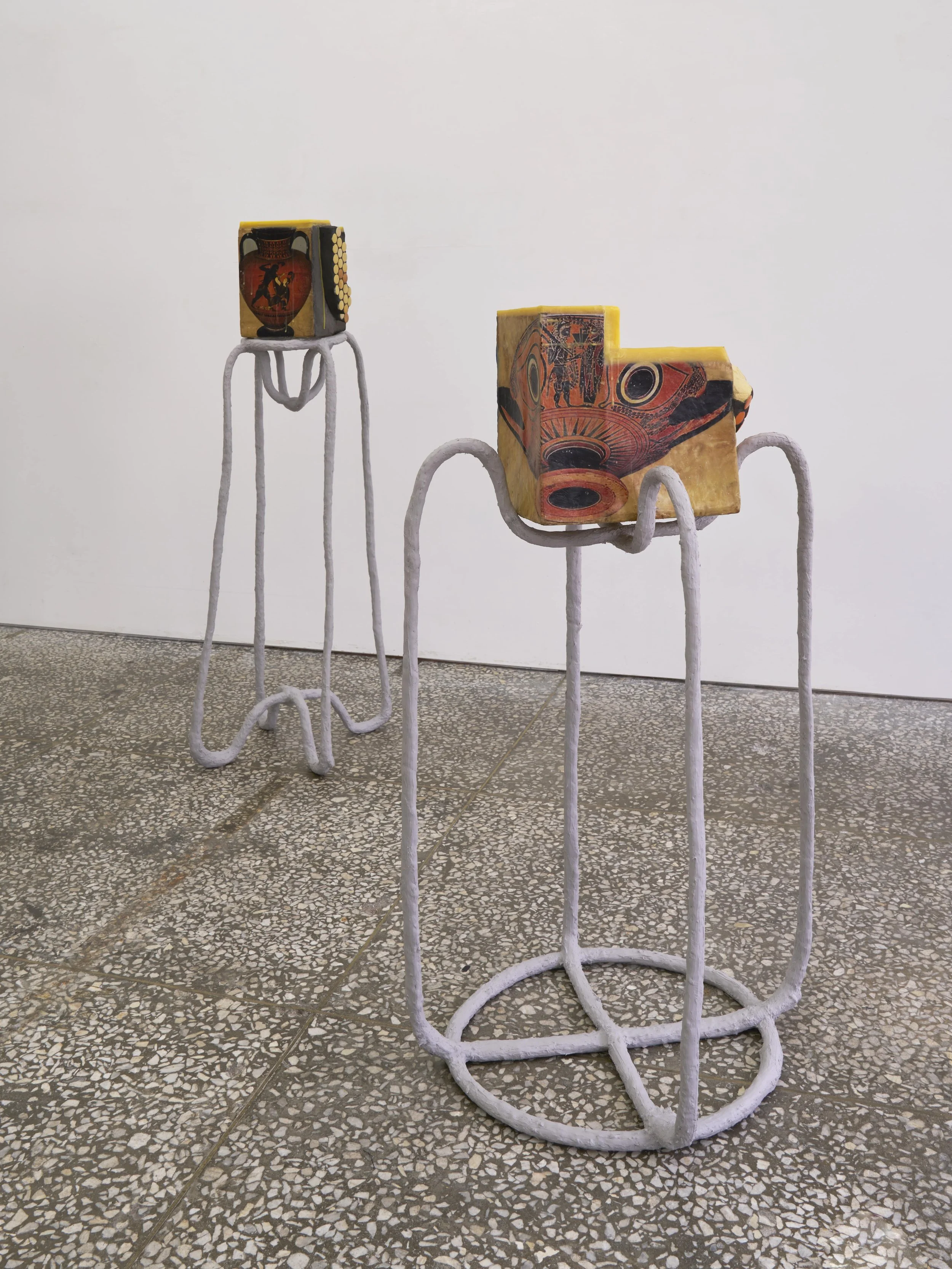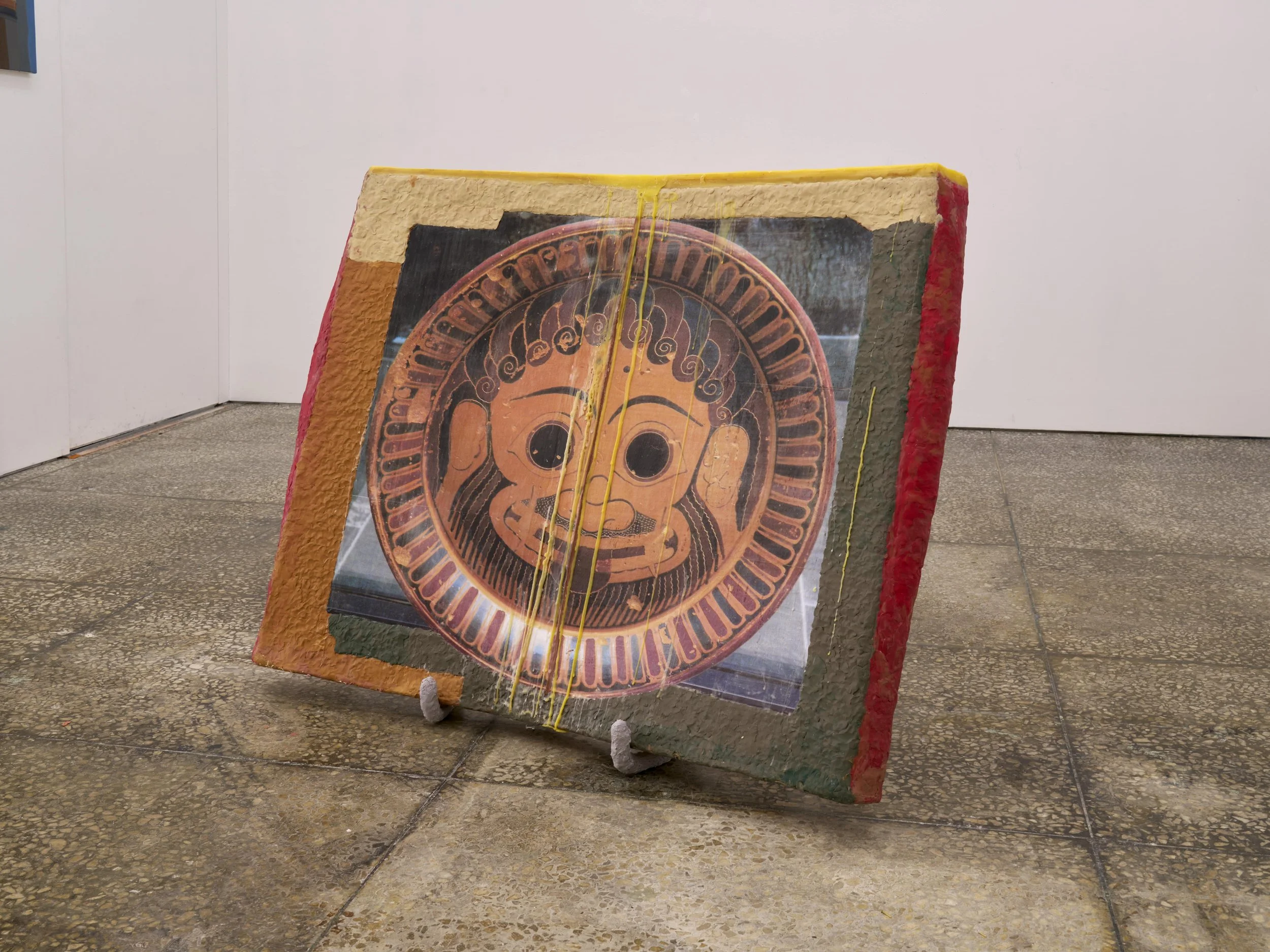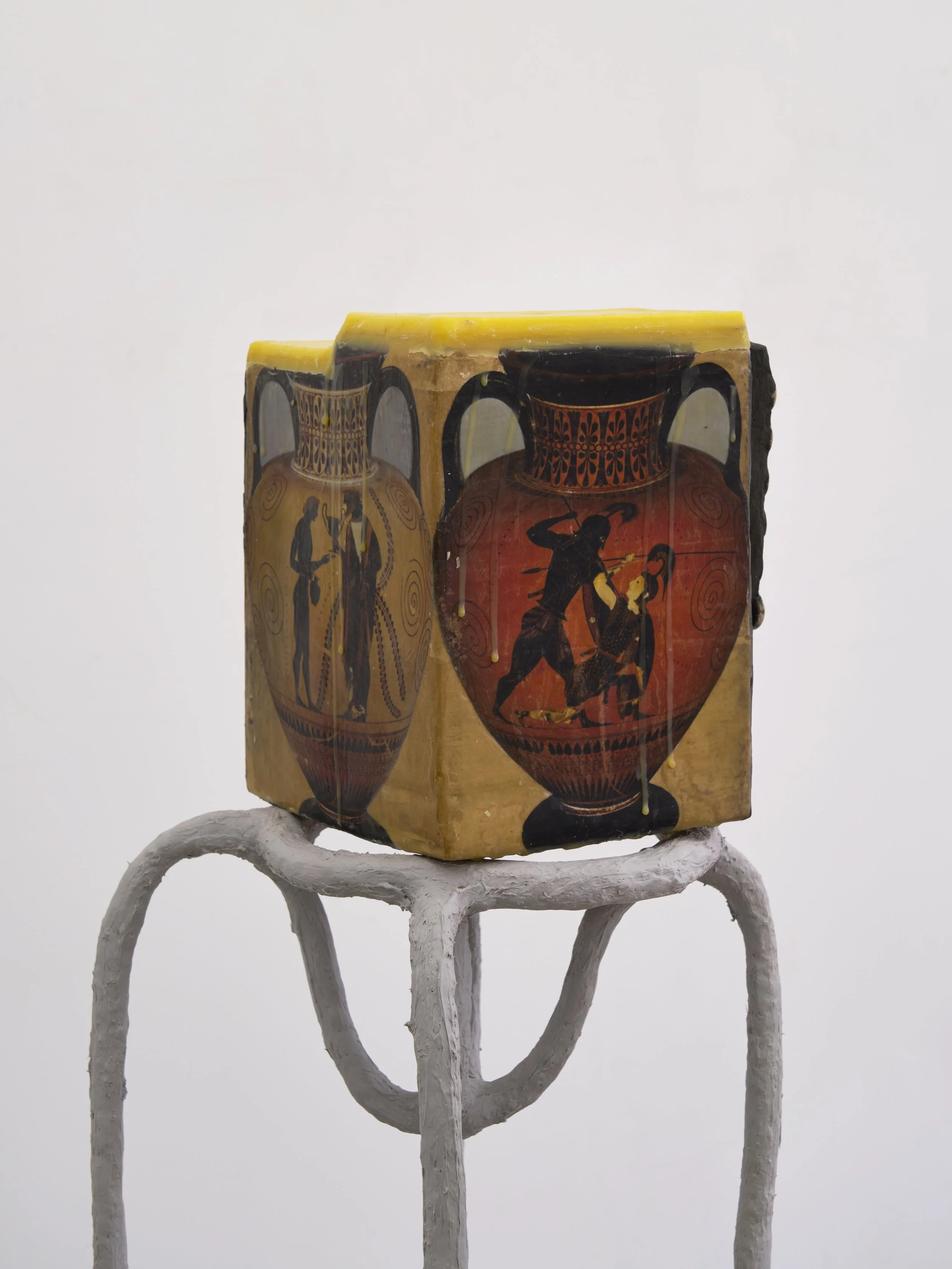Heejung Kang: Come Alive
강희정: Come Alive
8 - 29 November, 2024
YPC SPACE, Seoul
책과 종이 상자 등 일상적인 소재로 조형성을 탐구해 온 강희정의 개인전 《Come Alive》는 지난 2-3년간 제작한 근작 ‘암포라’ 연작과 ‘스튜디오’ 그림을 선보인다. 이번 전시는 평면 이미지와 입체 조형물, 아이콘과 실존, 일상 기능과 관조적 가치를 왕복하는 작품 세계의 활기 혹은 진행형 면모(liveness)를 조명한다.
모니터에 사진 한 장을 띄워본다. 신석기에 출현하여 고대그리스로마에서 포도주나 곡류를 보관, 운반하기 위해 널리 사용된 용기의 일종인 암포라의 한 측면을 포착한 사진. 사진 속 암포라에는 괴물 고르곤이 그려져 있다. 전면에 앉은 관객에게 자신의 모습을 온전히 보여주려는 연극배우처럼 똑바로 정면을 바라보는 괴물의 얼굴. 그것은 이내 잉크젯 프린터로 출력되어 21세기 현재까지도 물류 이동의 가장 원초적인 도구로 사용되는 종이 상자의 한 면에 부착된다. 일련의 과정을 거쳐 더 이상 상자로 알아볼 수 없는 입체물의 면들을 걸쳐 펼쳐진 이미지 위에는 밀랍이 덧칠되어 도톰하고 반투명하게 도드라진다.
어떠한 존재가 면에서 면으로 이행하는 과정은 어쩌면 고대 유물이 본래 기능을 내려놓고 박물관 수장고 혹은 진열장 안에 자리를 잡아 생의 새로운 국면에 접어들게 되는, 이글거리는 눈과 뱀으로 된 머리카락으로 보는 이를 얼어붙게 만들었다는 무시무시한 괴물이 심지어 귀여워 보이기까지 하는 모티프로 재발굴 되는 여정에 비견한다. 이러한 과정이 펼쳐지는 작업실은 여러 개의 캔버스 혹은 종이에 나뉘어 유화로 기록된다. 하나의 큰 평면이 아니라 각기 다른 크기의 자리들을 덧붙이며 제작된 그림은 전시장에 도착하여 주어진 환경에 맞게 재조립된다.
강희정의 작품 세계는 면과 면이 형상을 주고받고, 사물이 해체되고 재조립되며 한 곳에서 다른 곳으로 옮겨가는, 꼬리에 꼬리를 무는 만들기와 보여주기를 수행한다. 이는 한편으로는 파생물이 또 다른 파생물로 이행하는, ‘진짜’가 없는 지시적 연쇄처럼 다가온다. 하지만 이는 동시에 방대한 역사, 실존한 인물과 사건, 인류가 겪은 시대를 압축하고 펼치기를 반복한 끝에 발견되는 주름을 파고들며, 끊임없이 대면의 자리를 만든다. 납작하게 접혀 있지만 주름을 따라 접으면 무언가를 품을 수 있는 종이 상자처럼 강희정의 작품은 보여주는 것보다 그것이 펼쳐야 할 잠재력이 더 많은 듯 웅크리고 있다.
전시의 제목 “Come Alive”는 순환적인 제작 과정과 웅크린 작품이 여전히 진행형이라는 의미를 담는다. 이는 흙에 숨을 불어 넣어 생명의 불씨를 지피는 종류의 창작이 아니라 시작에 불과한 연쇄작용에 참여함으로써 발생하는 역동성을 지향한다. 창작은 전시가 펼쳐진 이후에도 필연적으로 진행형이다.
Come Alive presents recent series Amphora and Studio paintings by Heejung Kang, whose work spans sculpture, installation, and painting based on everyday materials, namely books and paper boxes. The exhibition highlights the “liveness” or progression of her work, which oscillates between flat images and three-dimensional sculptures, icons and presence, everyday functions and aesthetic values.
There is a photograph on the monitor. It captures one aspect of an amphora, a type of container that emerged in the Neolithic and was widely used in ancient Greece to store and transport wine or grain. On the surface of the amphora is depicted the monster Gorgon. The monster's face looks straight ahead, like a theater actor trying to give the audience a full view of itself. The image is printed on an inkjet printer and attached to one side of a paper box, the most basic logistics device still actively used in the 21st century. The image is stretched across the faces of the three-dimensional object, which is no longer recognizable as a box. With the beeswax applied over the image, the surface appears thick and semi-translucent.
The process of a being's transition from one surface to another is perhaps likened to the journey of an ancient artifact that has abandoned its original function and taken up residence in a museum collection or display case, entering a new phase of life, or an ancient monster with glaring eyes and serpentine hair intimidating enough to freeze the unfortunate viewer, turning into a charming motif. The studio where this process unfolds is divided into several canvases or sheets of paper and portrayed in oil paint. Rather than a single large plane, the paintings are created by adding multiple differently sized canvases or pieces of paper, which are reassembled to fit the given space.
Heejung Kang's works perform a non-hierarchical progression where surfaces give and take figures, and objects are deconstructed and reassembled, moving from one place to another. On the one hand, this operative chain gives way to derivatives or representations where there is no such thing as the “real.” However, on the other, it creates a space for a series of encounters, probing the folds of repeated condensation and unfolding of histories, living-or-lived people and events, and a range of space and time. Like a cardboard box that is folded flat but can carry a load when folded along its creases, Kang's work sits as if it has more give than meets the eye.
The title of the exhibition, “Come Alive,” refers to the cyclical process of making and implies the in-process quality of the work. Creation or production, in this sense, does not entail a divine work of breathing soul into clay to ignite a spark of life. Instead, it is about practicing within the endless chain that has already begun. The work, then, is inevitably ongoing, awaiting encounters to come.
